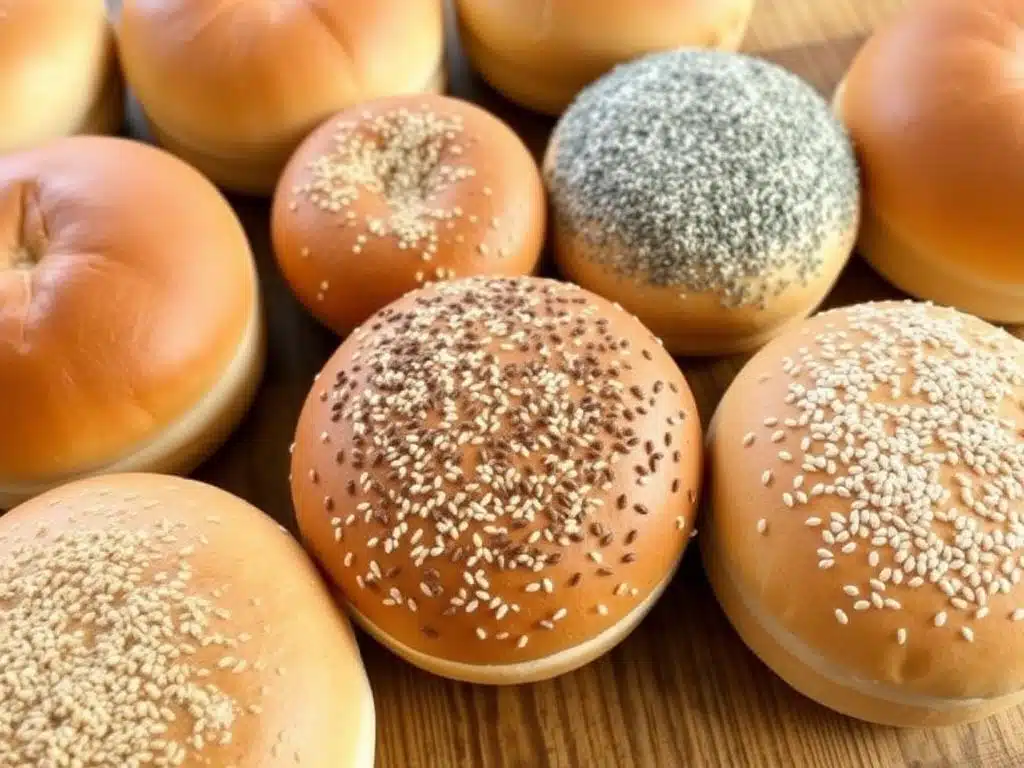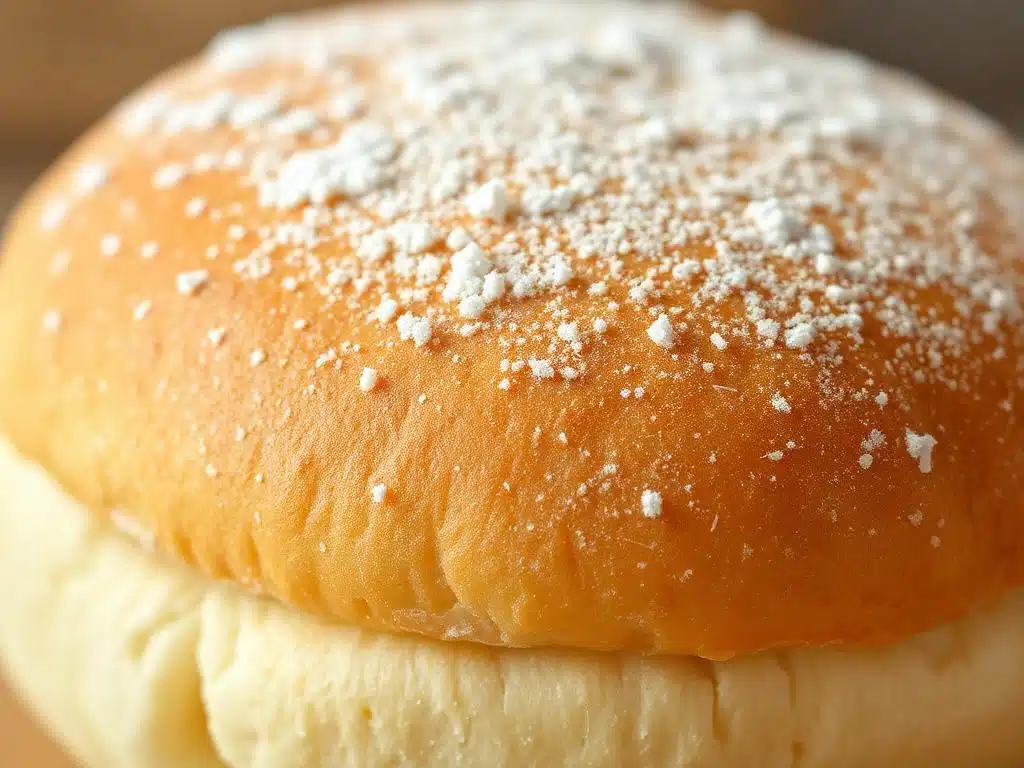What is the White Stuff in Burger Buns? When you bite into a delicious burger, the last thing on your mind might be the ingredients of the bun. However, if you’ve ever noticed a mysterious white stuff on your burger bun, you might find yourself wondering what it is. Is it safe to eat? Does it serve a purpose? In this article, we’ll dive deep into the world of burger buns, exploring everything from their ingredients to the science behind that intriguing white stuff. So, let’s get started!
Introduction to Burger Buns
Overview of the Topic
Burger buns are more than just a vessel for your favorite patty; they play a crucial role in the overall taste and texture of your meal. Typically soft and fluffy, these buns can come in various types, each with its unique flavor profile. But what about that white stuff that sometimes coats the surface? Is it flour, sesame seeds, or something else entirely? Understanding what goes into your burger bun can enhance your dining experience and help you make informed choices about what you eat.
Purpose of the Article
The purpose of this article is to demystify the white stuff in burger buns. We’ll explore the different types of buns, the common ingredients used, and the role that this white substance plays. By the end of this article, you’ll have a clearer understanding of what you’re eating and why it matters. So, let’s dig in!
Understanding Burger Buns
Types of Burger Buns
When it comes to burger buns, variety is the spice of life! Each type brings its own flair to the table, making your burger experience unique. Let’s take a closer look at some popular options.
Classic White Buns
Classic white buns are the go-to choice for many burger lovers. Soft, pillowy, and slightly sweet, they provide a perfect balance to savory fillings. Often made with refined flour, these buns are light and fluffy, making them a favorite for traditional burgers.
Whole Wheat Buns
For those looking for a healthier option, whole wheat buns are a fantastic choice. Packed with fiber and nutrients, they offer a nuttier flavor and denser texture. While they may not be as soft as their white counterparts, they certainly add a wholesome touch to your burger.
Specialty Buns
Specialty buns come in all shapes and sizes, catering to various dietary preferences. From brioche to pretzel buns, these options can elevate your burger game. Brioche buns, for instance, are rich and buttery, while pretzel buns add a delightful chewiness that pairs well with hearty toppings.
Gluten-Free Buns
With the rise of gluten sensitivities, gluten-free buns have become increasingly popular. Made from alternative flours like almond or rice flour, these buns provide a safe option for those avoiding gluten. While they may differ in texture and taste, they still serve as a great base for your favorite burger.
Common Ingredients in Burger Buns
Understanding the ingredients in burger buns can help you appreciate their flavors and textures. Let’s break down some of the most common components.
1 Flour
Flour is the backbone of any burger bun. It provides structure and texture, with different types of flour affecting the final product. All-purpose flour is commonly used, but whole wheat and specialty flours can also be found in various buns.
2 Yeast
Yeast is what makes buns rise and gives them that delightful fluffiness. When activated, yeast ferments the sugars in the dough, producing carbon dioxide that causes the dough to expand. This process is essential for achieving that light, airy texture we all love.
3 Sugar
Sugar isn’t just for sweetness; it also plays a role in the browning of the bun. During baking, sugar caramelizes, contributing to the golden color and enhancing the overall flavor. Plus, it helps to feed the yeast, promoting a better rise.
4 Fats and Oils
Fats and oils, such as butter or vegetable oil, add richness and moisture to burger buns. They help create a tender crumb and improve the overall mouthfeel. Additionally, fats can enhance the flavor, making each bite more enjoyable.
5 Additives and Preservatives
Many commercial burger buns contain additives and preservatives to extend shelf life and improve texture. While some of these ingredients are harmless, it’s always a good idea to check labels if you’re concerned about what you’re consuming. Understanding these components can help you make informed choices about your food.
What is the white stuff in burger bun
Identifying the White Stuff
When you take a closer look at your burger bun, you might notice a white stuff on its surface. But what exactly is it? Let’s break down the common types of white substances you might encounter.
Common Types of White Stuff
- Flour Dusting: One of the most common culprits is flour dusting. Bakers often sprinkle flour on the surface of the dough before baking to prevent sticking and to create a visually appealing finish. This flour can sometimes remain on the bun, giving it that characteristic white appearance.
- Sesame Seeds: Another popular topping is sesame seeds. While they’re not always white, they can appear light against the bun’s surface. These seeds add a delightful crunch and nutty flavor, enhancing the overall burger experience.
- Other Toppings: Occasionally, you might find other toppings like poppy seeds or even a light glaze that can appear white. These toppings not only contribute to the bun’s aesthetic but also add unique flavors and textures.
The Role of the White Stuff
Now that we’ve identified the white stuff, let’s explore its role in the overall burger bun experience.
Aesthetic Appeal
The white stuff adds visual interest to the bun, making it more appealing. A well-presented burger can enhance your dining experience, making you more excited to take that first bite. After all, we eat with our eyes first!
Texture and Flavor
Beyond aesthetics, the white stuff can also contribute to the texture and flavor of the bun. For instance, sesame seeds provide a delightful crunch, while flour dusting can create a slightly different mouthfeel. These elements work together to create a more enjoyable eating experience.
Nutritional Value
While the white stuff may not be the star of the show, it can still offer some nutritional benefits. For example, sesame seeds are a good source of healthy fats, protein, and essential minerals. Understanding these contributions can help you appreciate the bun even more.
Health Considerations
As with any food, it’s essential to consider the health implications of the white stuff in burger buns.
Allergens
If you have allergies, it’s crucial to be aware of what’s on your burger bun. Flour, sesame seeds, and other toppings can trigger allergic reactions in some individuals. Always check with the restaurant or read labels if you’re purchasing pre-packaged buns.
Nutritional Impact
While the white stuff can add some nutritional value, it’s essential to consider the overall composition of the bun. For instance, a bun with a lot of added sugars or unhealthy fats may not be the best choice, even if it has some beneficial toppings. Always aim for balance in your diet.
In this section, we’ve delved into the white stuff found in burger buns, exploring its types, roles, and health considerations. Now that we have a clearer understanding, let’s move on to the science behind burger buns in the next part! ## Part 2: The Science Behind Burger Buns
The Baking Process
Understanding the science behind burger buns can help us appreciate the craftsmanship that goes into making them. Let’s explore how the ingredients interact during the baking process.
Ingredients Interaction
When you mix the ingredients for burger buns, a fascinating transformation occurs. The flour provides the structure, while the yeast ferments the sugars, producing carbon dioxide. This gas gets trapped in the dough, causing it to rise. The fats and oils contribute to the tenderness, while sugar aids in browning. Each ingredient plays a vital role, working together to create that perfect bun.
Maillard Reaction
One of the most exciting aspects of baking is the Maillard reaction. This chemical reaction occurs when proteins and sugars are heated, resulting in the browning of the bun. It not only enhances the color but also develops complex flavors that make the bun more delicious. This reaction is what gives freshly baked buns their irresistible aroma and taste.
The Role of Additives
In commercial baking, additives are often used to improve the quality and shelf life of burger buns. Let’s take a closer look at some common additives and their functions.
Emulsifiers
Emulsifiers are substances that help blend ingredients that typically don’t mix well, like oil and water. In burger buns, they improve texture and extend freshness. By stabilizing the dough, emulsifiers ensure that your bun remains soft and enjoyable even after a few days.
Preservatives
Preservatives are added to prevent spoilage and extend the shelf life of burger buns. While some people may be wary of preservatives, many are considered safe for consumption. However, it’s always a good idea to read labels and choose buns with minimal additives if you prefer a more natural option.
The Future of Burger Buns

Innovations in Burger Bun Production
As the culinary world continues to evolve, so does the production of burger buns. Innovations in baking technology and ingredient sourcing are paving the way for healthier and more sustainable options. For instance, some bakeries are experimenting with alternative flours, such as chickpea or quinoa flour, to create gluten-free and protein-rich buns. These innovations not only cater to dietary restrictions but also offer unique flavors and textures that can elevate the burger experience.
The Rise of Artisan and Craft Buns
In recent years, there’s been a significant shift towards artisan and craft buns. Many consumers are seeking out locally sourced, handmade options that prioritize quality over mass production. These buns often feature organic ingredients and traditional baking methods, resulting in a product that’s fresher and more flavorful. As a result, restaurants and food trucks are increasingly offering gourmet burger buns that reflect regional flavors and culinary creativity.
Sustainability in Bun Production
Sustainability is becoming a crucial consideration in the food industry, and burger buns are no exception. Many producers are focusing on eco-friendly practices, such as sourcing organic grains and reducing packaging waste. Additionally, some companies are exploring plant-based alternatives to traditional buns, catering to the growing demand for vegan and vegetarian options. This shift not only benefits the environment but also aligns with consumer preferences for healthier, more sustainable food choices.
Consumer Trends and Preferences
As consumers become more health-conscious, there’s a noticeable trend towards buns that offer nutritional benefits. Whole grain, high-fiber, and low-carb options are gaining popularity, as people seek to balance indulgence with health. Furthermore, the demand for transparency in food labeling is prompting manufacturers to disclose ingredient sources and nutritional information, allowing consumers to make informed choices.
The Future of Burger Buns
Looking ahead, the future of burger buns is bright and full of possibilities. With ongoing innovations in baking techniques, ingredient sourcing, and consumer preferences, we can expect to see a diverse range of options that cater to various dietary needs and taste preferences. Whether you’re a fan of classic white buns or adventurous enough to try a new artisan creation, the world of burger buns is evolving, and it’s an exciting time to be a burger lover!
In this final section, we’ve explored the future of burger buns, highlighting innovations, trends, and sustainability efforts. As we continue to enjoy our favorite burgers, let’s keep an eye on the evolving landscape of this beloved food staple!
Conclusion
Summary of Key Points
In this article, we’ve uncovered the mystery behind the white stuff in burger buns. From understanding the different types of buns to exploring the ingredients and the science of baking, we’ve gained valuable insights into what makes a great burger bun.
Final Thoughts on Burger Buns and Their Ingredients
Next time you enjoy a burger, take a moment to appreciate the bun that holds it all together. Whether it’s the classic white bun or a specialty option, knowing what goes into your food can enhance your dining experience. So, go ahead and savor that delicious burger, and remember the fascinating journey of its bun!
FAQs
1 What is the white powder on burger buns?
The white powder you see on burger buns is often flour dusting, which helps prevent sticking during baking. It can also be sesame seeds or other toppings that add flavor and texture.
2 Is the white stuff in burger buns safe to eat?
Yes, the white stuff is generally safe to eat. However, if you have allergies, it’s essential to check the ingredients, as some toppings may trigger reactions.
3 Can I make my own burger buns without the white stuff?
Absolutely! You can make homemade burger buns and choose to skip the white stuff entirely. Just adjust your recipe to suit your preferences.
4 What are the health benefits of different types of burger buns?
Different types of burger buns offer various health benefits. For instance, whole wheat buns provide more fiber, while gluten-free options cater to those with sensitivities. Always consider the overall nutritional profile when choosing your bun.
5 Are there any alternatives to traditional burger buns?
Yes, there are plenty of alternatives! Lettuce wraps, portobello mushrooms, and even sweet potato slices can serve as creative substitutes for traditional burger buns, catering to various dietary needs.
Linking to Related Recipes
- Egg White Burger Buns: For those looking for a lighter option, our Egg White Burger Buns provide a fluffy texture with reduced calories, making them perfect for a guilt-free burger experience.
- Protein Burger Buns: If you’re aiming to boost your protein intake, try our Protein Burger Buns. These buns are not only delicious but also packed with nutrients, making them an excellent choice for fitness enthusiasts.
- Egg Bread Recipe: For a unique twist, consider using our Egg Bread Recipe to create a rich and flavorful base for your burgers. This recipe adds a delightful taste and texture that can elevate any burger.
- Moon Bread Recipe: Lastly, if you’re feeling adventurous, our Moon Bread Recipe offers a fun and creative way to make buns that are visually appealing and delicious, perfect for themed parties or gatherings.

